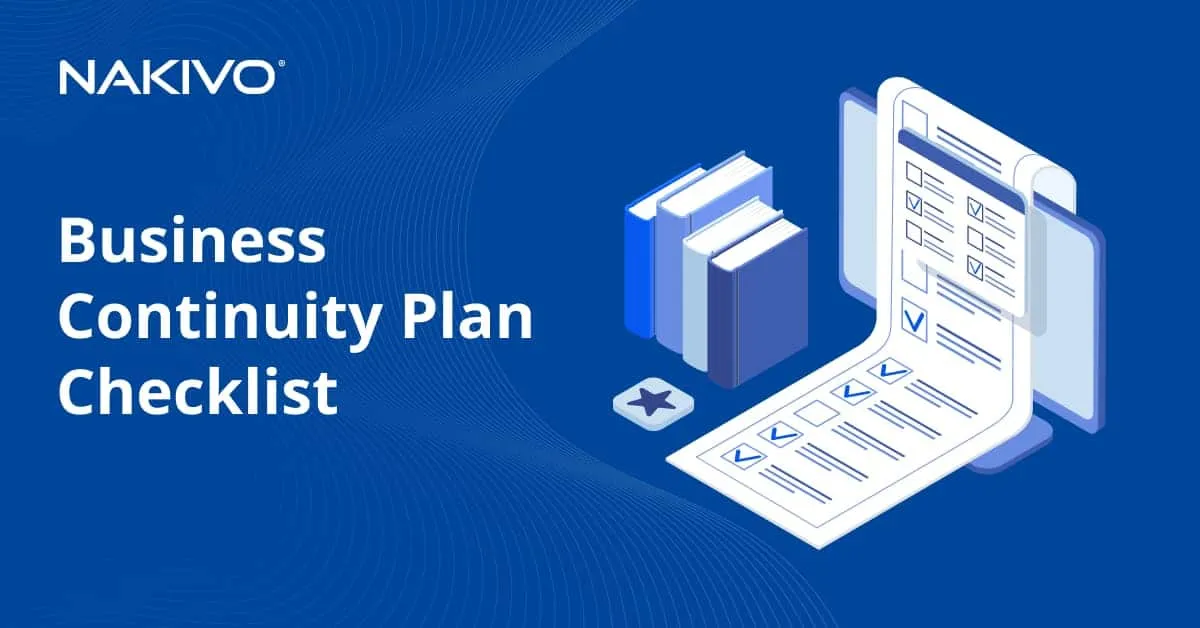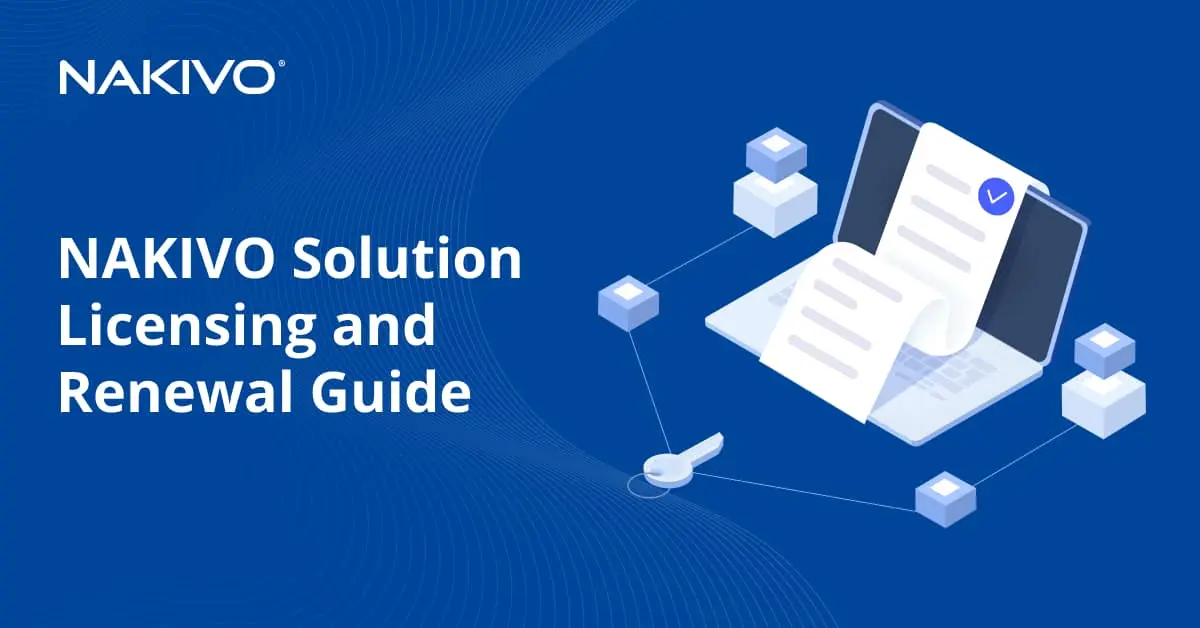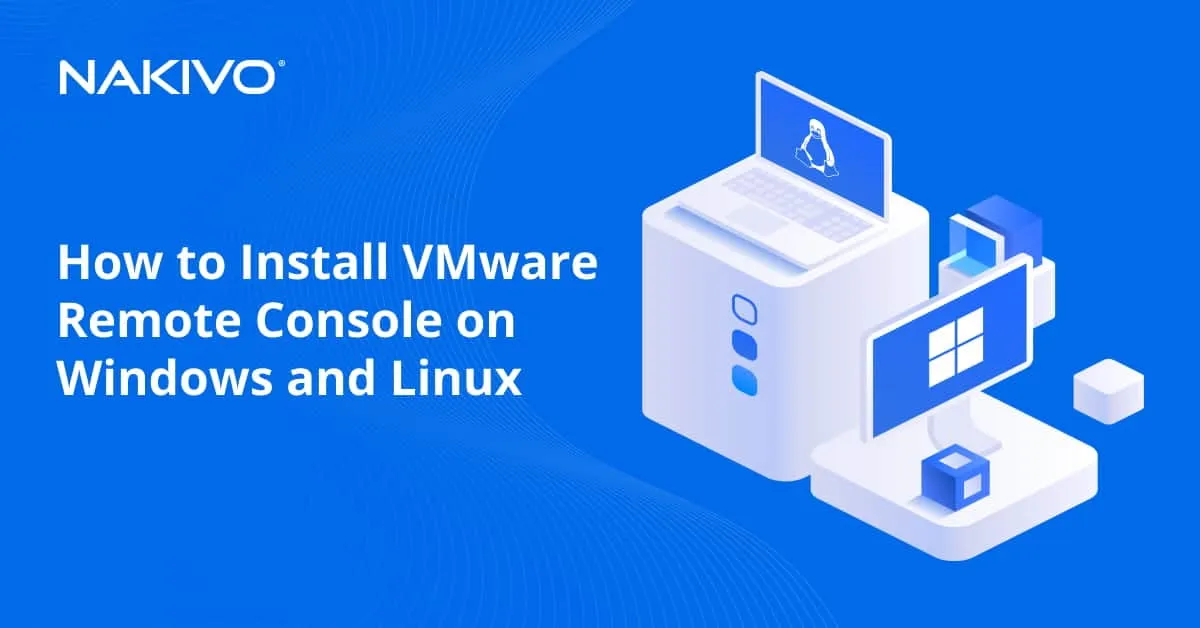NAKIVO BaaS and Traditional Backup: A Direct Comparison
Data backup is critical to any organization’s IT strategy, ensuring business continuity and protection against data loss. As technology evolves, businesses face the choice between traditional backup methods and modern cloud-based solutions like Backup as a Service (BaaS). Each approach offers distinct benefits and considerations depending on infrastructure, scalability and management needs.
Understanding these differences is key to making an informed decision. This blog post explains how BaaS compares to traditional backup and what factors to consider when choosing between them.
What Is Backup as a Service (BaaS)?
Backup as a Service (BaaS) is a cloud-based solution in which a third-party provider automates, manages and stores your data backups offsite. This removes the need for on-premises backup infrastructure. BaaS is a subscription-based model that delivers secure, remote backup and recovery of data and applications via the cloud. It simplifies the backup process by outsourcing storage and management to a trusted managed service provider (MSP).
With Backup as a Service, organizations can back up data without investing in a backup infrastructure, including backup servers, network equipment or software licenses. Deploying on-premises backup infrastructure may be complex and require expertise. BaaS allows organizations to easily configure on-premises infrastructure to back up their data to the cloud.
The advantages of Backup as a Service
- Cloud backup storage is highly scalable, which can help prevent storage issues and leave enough space for new backups. Multiple levels of redundancy ensure that storage and networks are always available for backup and recovery operations.
- Relatively easy configuration. After buying a subscription license from a backup-as-a-service vendor, an organization can start backing up its data in hours or even minutes.
- Backups are stored offsite, keeping them safe from local disasters.
- A BaaS provider is responsible for the backup infrastructure and maintenance (including patching, updating, monitoring, changing affected disks, etc). The responsibilities are generally explained in the Service Level Agreement (SLA).
- Data can be accessed from anywhere with an internet connection and credentials.
- Some BaaS providers offer distributed data centers in different regions.
- The ability to outsource a backup infrastructure to specialists you trust and focus on primary business tasks.
- Most BaaS providers offer strong data encryption to prevent third parties from accessing sensitive information.
- In some cases, using Backup as a Service can be more cost-effective for an organization.
Disadvantages of BaaS
- There is no complete control over the backup infrastructure and data storage. Some organizations may not trust a third party to store their data, including backups, without fully controlling this storage. If a service provider manages data encryption keys, you have less control over them.
- An internet connection is required. To back up any data using a BaaS platform, you must have a stable and reliable connection with high bandwidth. Slow internet connection may delay backup windows and increase the recovery time, exceeding the Recovery Time Objective (RTO). Recovery for large data sets can be slower due to the limitation of connection speed.
- While hardware for the backup infrastructure is unnecessary, you must pay regularly for Backup as a Service. The amount depends on the subscription plan, the amount of data and other parameters. There can be hidden fees for ingress and egress data transfer. Over time, these costs can exceed the one-time traditional backup investment, especially with large data volumes and long-term retention requirements. Costs may also increase unpredictably as data grows.
What Is Traditional Backup?
Traditional backup is the practice of manually or automatically copying files, systems or entire environments to local infrastructure, typically managed by in-house IT teams. This approach was used everywhere before the rise of cloud-based Backup as a Service in cloud computing.
In traditional backups, administrators manually configure backup storage, networks and software. Backups are usually stored on local disks, external disks, tape cartridges, Network Attached Storage (NAS) devices and backup servers.
Organizations buy equipment, including disk devices, servers, network equipment and software licenses to implement a traditional backup solution in their infrastructure. This configuration requires time and effort. Administrators must perform maintenance tasks, monitor disk health, check network availability and verify backups. Maintenance also includes installing security patches to fix known vulnerabilities and avoid cyberattacks. Traditional backup is a time-tested, hardware-based approach to data protection.
The advantages of traditional backups:
- Full control over all processes, configuration and backup storage.
- Backup processes do not depend on an internet connection and can be done in local or isolated environments.
- Costs for long-term retention can be lower and the organization defines retention policies. There are no monthly or annual fees (for perpetual licenses of backup or free software). There are no charges for data recovery and transferring data over the network. Fixed capital investment in hardware (CapEx model) ensures predictable costs.
- Maximum configuration flexibility.
- Fast backup and recovery speed due to using directly attached storage and a local network, achieving short RTO.
- Customized security. You can manage security keys for accessing and encrypting data to prevent unauthorized access. Storage media may be kept in safes or off-site vaults.
Disadvantages of traditional backups:
- Requires investments in hardware and software licenses to set up an on-premises backup infrastructure.
- Requires highly-skilled system administrators to configure a backup environment.
- Maintenance, including updates, upgrades and patches, requires time and knowledge. Administrators are responsible for system monitoring.
- Scaling up backup storage depends on the organization’s hardware and software and may be tricky in specific scenarios. Expanding quickly with growing data volumes may be challenging.
- Local backups can be lost due to a disaster. Storing backup copies off-site reduces this risk.
Key Differences Between BaaS and Traditional Backup
The table below explains the main differences between Backup as a Service and traditional backup.
|
Feature |
Backup as a Service (BaaS) |
Traditional Backup |
|
Storage location |
Cloud-based (offsite) |
On-premises (local disks, tapes, or servers) |
|
Management |
Managed by a service provider |
Managed in-house by local IT teams |
|
Cost model |
Operational expense (OpEx): subscription-based |
Capital expense (CapEx): upfront hardware + ongoing maintenance |
|
Scalability |
On-demand, elastic |
Limited by physical infrastructure |
|
Deployment speed |
Fast (minutes to hours) |
Slow (days to weeks to provision, configure, test) |
|
Security & compliance |
Built-in encryption, compliance-ready (GDPR, HIPAA, etc.) |
Depends on local controls and manual enforcement |
|
Hardware requirements |
None (cloud infrastructure) |
Requires physical servers, tape drives, storage media |
|
Testing & verification |
Often automated (reports, alerts) |
Testing recovery verification is configured manually |
|
Recovery speed |
Depends on the internet connection bandwidth |
Doesn’t depend on the internet connection for on-premises environments |
As you can see, each backup approach has its advantages and disadvantages. Consider them when choosing which backup approach to use in your organization.
When to Choose BaaS vs Traditional Backup
Choosing between Backup as a Service and traditional backup depends on your organization’s size, infrastructure, compliance needs, security requirements and recovery expectations.
Choose BaaS for your organization in the following scenarios:
- You are using cloud or hybrid Infrastructure, such as Microsoft 365, Google Workspace or cloud VMs (AWS EC2, Azure). You want to back up SaaS (Software as a Service), IaaS (Infrastructure as a Service) or container workloads.
- The lack of dedicated IT Administrators. You don’t have the resources or time to manage backup hardware and software. You want automation and centralized management. BaaS can be optimal for small and medium-sized businesses, branch offices or startups.
- You need scalability and flexibility since your data volume is growing rapidly or unpredictably. You need long-term retention without investing in physical storage. Cloud backup scales on demand and no new hardware is required.
- Compliance or disaster recovery considerations. You want geo-redundant backups with rapid cloud-based restoration. You must meet data protection standards (GDPR, HIPAA, ISO 27001). BaaS enables fast recovery and built-in compliance features, including strong encryption.
- You want OpEx over CapEx, and prefer subscription-based monthly costs. You want to avoid upfront hardware investments.
When to choose a traditional backup:
When to choose a traditional backup:
- You operate in an air-gapped or high-security environment. You work in defense, critical infrastructure or highly regulated sectors. You need offline or isolated backups to prevent ransomware infections. Tapes or offline disks offer proper air-gapped protection.
- You require complete control over data storage. You must physically control the location, media and access to data. You need custom encryption, policies and backup schedules. This practice is common in government agencies, banks or healthcare institutions.
- You already own a backup infrastructure and have invested in backup servers, tape libraries and management software. Your system is working well and doesn’t require scaling.
- Internet connectivity is poor or even absent. Your local infrastructure has limited bandwidth or must operate in remote/offline conditions. Traditional backups can run independently of internet access.
Hybrid option: Using BaaS and traditional backup
A large number of organizations use a hybrid backup model, combining traditional backup with Backup as a Service. In this case, traditional backup is used for fast backup and recovery in the local environment. BaaS is used to back up cloud services and store backup copies offsite (according to the 3-2-1 backup rule). This approach offers fast RTO and offsite resilience and is often used in mid-sized organizations and large enterprises.
You can use BaaS for cloud readiness and traditional backup for offline control, high-security needs or environments with poor internet connection.
Why Choose NAKIVO for BaaS
NAKIVO Backup & Replication is a comprehensive data protection solution that safeguards data using the BaaS and traditional backup approaches. It allows users to back up data on-premises and to the cloud using a single solution.
Installing the solution in multi-tenant mode is optimal for managed service providers (MSPs) who provide backup as a service in the cloud. Installing the NAKIVO solution in a single-tenant mode is ideal for organizations that want to back up data to local storage on primary and remote sites, including backup to the cloud.
MSPs providing Backup as a Service using NAKIVO Backup & Replication can benefit from numerous advantages. Multi-tenancy ensures that all tenants are securely isolated from each other. The NAKIVO solution includes a wide feature set, including:
- Flexible licensing and pricing for both MSPs and customers. Per-workload pricing is available. An MSP can buy licenses that are stored in a license pool. Then, licenses can be allocated to customers. Monthly or annual subscription payments are also available. An MSP can start from a limited number of workloads and scale them up when the number of customers and amount of protected data grow. It is also possible to add clients with their own licenses.
- A self-service portal for customers with a user-friendly web interface adds more freedom for configuration and control of backup environments. Up to 100 customers (tenants) are supported per one multi-tenant deployment.
- Efficient resource allocation to tenants. MSPs can allocate resources to customers from their infrastructure, including backup repositories, hosts and clusters. As a result, clients can back up, replicate, fail over and recover their data and workloads.
- Multiplatform support: The solution can protect VMware vSphere, Microsoft Hyper-V, Nutanix AHV, Proxmox VE, AWS EC2, Windows/Linux physical servers and workstations, file shares, Microsoft 365, Oracle databases, etc.
- Multiple storage destinations including local storage, NAS and cloud, such as Amazon S3, Azure Blob Storage and other S3-compatible storage.
- Flexible retention policies. Customers can configure multiple rules of any complexity to schedule backup jobs and retain backup data. The GFS retention policy is supported.
- Strong encryption. Backup data can be encrypted in transit and at rest to ensure reliable security.
- Immutable backups. Apply immutability to backups stored locally or in the cloud to protect them from modification or deletion by ransomware.
- The Direct Connect feature allows customers to access their sites without configuring a VPN connection. MSPs can connect to the client’s remote resources in the MSP Console.
- Backup testing. You can configure automated backup verification and test disaster recovery scenarios for site recovery.
- Disaster recovery. The powerful Site Recovery feature allows customers to create complex disaster recovery workflows and use them in case of a disaster to recover data quickly and meet the shortest RTO.
Conclusion
Backup as a Service (BaaS) and traditional backup solutions offer distinct benefits depending on your organization’s needs, infrastructure and resources. While traditional backup provides direct control and may suit certain legacy environments, BaaS brings the flexibility and scalability of cloud computing. Choosing between them requires a clear understanding of your technical and operational priorities. NAKIVO Backup & Replication allows organizations and MSPs to use BaaS or traditional backups.




